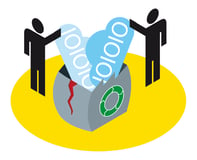Your Order is Ready: When to Leverage A Build-to-Order Model
Nick Ostdick - September 01, 2016

In a perfect world, everything would be created exactly when and how you needed it. Your cheeseburger and fries. Your office chair. Your shirt and tie. Not only would this allow for products to be built to your exact specifications, it would also significantly reduce waste or unused items as these objects would be created on an as-needed basis. However, given the practical implications of modern manufacturing and the variables at play in creating items on a customer-order scale, it’s impractical to expect the products that are a part of everyday lives to be produced in this way.
The same goes for the automotive supply chain industry and the vehicles we drive on a daily basis. Build-to-Order (BTO) principles, which simply mean creating parts and products specifically when a customer places an order, sounds like an efficient method of managing inventory and ensuring the right products are in the supply chain at the right time.
Challenges in Adopting Build-to-Order (BTO) Principles
This lean manufacturing principle meets resistance from OEMs who believe BTO doesn’t adequately account for surges in overall customer demand or order cancellations, both of which can result in severe disruptions in planned production and damage across various touch points in a company’s value chain.
And while this may be true, BTO does have its place in the automotive supply chain provided OEMs have the end-to-end (E2E) visibility tools and solutions to know when and where to apply BTO. Leveraging these intelligent planning solutions is a critical driver in helping manufacturers understand the benefits and liabilities of BTO and finding the appropriate mix of BTO and Build-to-Stock (BTS) platforms.
Understanding Build-to-Stock (BTS) Strategies
Before we examine the instances when BTO can be a value-added proposition and how intelligent planning solutions can help OEMs leverage BTO in the right context, we must first examine BTS.
Whereas BTO strategy is based solely on incoming customer orders, BTS functions on forecasting and demand history in terms of scheduling production programs and inventory management. While neither strategy functions with 100 percent efficiency on its own, BTS does have its place in global production and supply management. Products and components parts where demand is stable and consistent are prime candidates for BTS production because it’s less efficient and more risky to schedule production based on incoming orders - the constant demand for these parts actually requires enough current inventory to meet customer demand.
When Should OEMs Leverage Build-to-Order (BTO) Model?
Now that we understand both models, the question becomes: When should OEMs leverage the BTO model? When does BTO become a value-added service for manufacturers and how do companies recognize this?
-
First, because BTO is best used for short-term planned production programs with quick changeovers, it make sense BTO should be leveraged for small or specialty customer orders where the BTS model would be less efficient and more costly. For example, orders with especially short lead times are prime candidates for BTO production because it’s less advantageous for manufacturers to allocate resources, materials, and production hubs to projects so small in scope - in fact, such an action could create significant bottlenecks or disruptions across a company’s entire value chain as these small runs could hamper larger BTS programs.
-
And secondly, in order to identify instances where BTO is the right solution at the right time, manufacturers need to deploy powerful planning tools and solutions in order to gain insight into overall supply situation. This level of visibility and transparency can be attained through predictive modeling, access to inventory levels, and reviewing up-to-the-minute data in real-time. Additionally, utilizing advanced supply management strategies such as BOM explosion, optimized PFEP, and in-transit monitoring will help companies review their supply stream and incorporate BTO principles to ensure the right products arrive to the right customer at the right time.
Conclusion: BTO's Role in a Dynamic Supply Chain
While BTO may not be the most practical production method at a manufacturer’s disposal, it does have its place in global production programs where part orders are small in scope and need to be produced under restrictive deadlines. In an industry where demand is stable and consistent, BTO would perhaps be the preferable strategy; however, given the automotive industry’s variant-rich nature, BTO is not sufficient on its own. Still, in striving for maximum visibility and transparency through intelligent planning solutions, OEMs can utilize BTO methods to make informed decisions across multiple silos and varying operational segments to reduce lead times, improve delivery timetables, and increase the overall efficiency of the supply network.
If you want to learn more get your Guide to Industry 4.0:
LATEST POSTS
- Understand Circular Economy in The Manufacturing Industry
- How Can Industry 4.0 IT Integration Be Achieved Smoothly?
- The Significance of Order Sequencing in Discrete Manufacturing
- How to improve your Supply Chain Management: The Power of Control Towers
- Optimizing Human Resource Scheduling in Manufacturing: A Technological Approach



